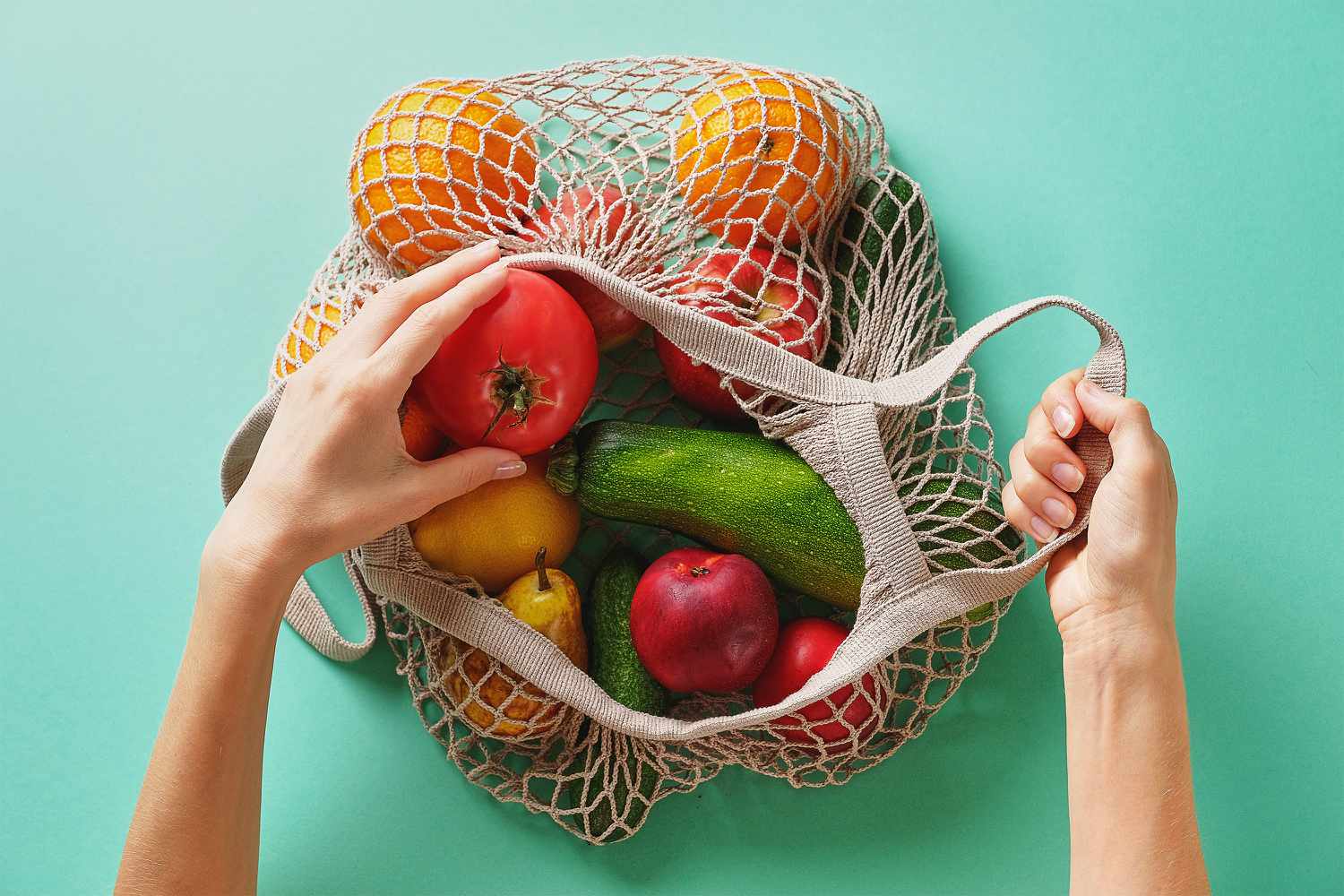14 Easy Methods to Increase Your Consumption of Fruits and Vegetables

Only a mere 10% of adults in America are achieving the highly recommended daily servings of fruits and vegetables. The percentage is strikingly low, signifying that the majority fall dramatically short of what their bodily needs dictate. When you consider that The 2020–2025 Dietary Guidelines for Americans recommend daily consumption of a cup and a half fruit equivalent of one and a half apples or medium pears, and two 3-cup equivalency of vegetables equivalent to two cups of baby carrots or broccoli, it's clear that such dietary recommendations are not impossible to meet.
The encouragement to consume more plant-based foods is backed by research to improve weight management, enhance heart health, and ward off chronic diseases. The vast array of essential nutrients found in fruits and vegetables are indispensable for boosting immunity, fighting off infections, and maintaining optimal bodily functions.
Despite popular knowledge about the health benefits of fruits and vegetables, achieving the recommended daily servings is often a struggle. This may be attributed to being overly busy, fatigue, stress or financial constraints. Alternatively, a dislike for cooking or preference for easy meals could be a barrier. These are common challenges I often hear as a registered dietitian, but my role is to aid in making the journey to healthier eating less of a task. The following are tips to aid the incorporation of more fruits and vegetables into your meals.
Being a part of a Community Supported Agriculture (commonly known as CSA), is akin to subscribing to a weekly box of various produces. The CSA model is not only rewarding due to its contribution to sustainability and support for local farmers but also offers the prospect of encountering and trying new fruits and vegetables as elaborated by Amy Beney MS, RD, CDCES, Owner Nutrition Insights PLLC.
Rather than forcing yourself to consume the fruits and vegetables that you don't enjoy, try preparing them differently or incorporating likable ingredients. Caroline Young, the owner of Whole Self Nutrition advises against pressuring yourself into consuming more fruits and vegetables purely for dietary reasons, as this often leads to a resentment and avoidance of such foods . It's crucial to find enjoyment and satisfaction in your meals.
An appealing plate of food is more likely to be eaten than a dull, unappetizing one. Dietitian Steph Magill suggests presenting fruits and vegetables in their colourful glory on a platter, in various ways such as roasting multiple vegetables or chopping up fresh produce and serving it in a family-style manner. This approach encourages choosing and trying what one prefers from the colourful array.
Another trick by Malina Malkani is to implement a change in your delivery methods of fruits and vegetables. This can entail the use of skewers or fun utensil picks for cut fruits and vegetables, ultimately transforming the experience of vegetable consumption into a fun-filled activity.
Enhancing the flavor of your vegetables can be achieved using available items in your kitchen. One example is coating your vegetables in mustard before air frying them, as suggested by Wan Na Chun of One Pot Wellness, to add tang and help your spices adhere properly. Should you not own an air fryer, you can easily achieve a similar effect by making a mustard-olive oil marinade and roasting cut veggies in an oven.
Show creativity when incorporating vegetables into your meals. A tip by Lauren Harris-Pincus, the founder of NutritionStarringYOU.com entails blending vitamin D-rich mushrooms and adding them to your favorite meat dishes, adding bulk to your meal and aiding in cost management. Blended mushrooms, that are not fully pureed, can be mixed with meat and prepared as usual, and are particularly effective in meatballs, meat sauce, meatloaf, and tacos, among others.
By adding vegetables to easy pasta dishes, you can move closer to achieving your daily fruit and vegetable goals. Tiffany Lankford, MS, RD, LD states, 'Small changes can transform standard meals into nutrition powerhouses.' Suggestions include adding spinach, kale, or zucchini to jarred pasta sauces or shredded zucchini, carrots, or spinach to dishes with minced meat for an added nutrient boost.
Increasing your nutritional intake can also reduce fatigue and improve your gut microbiome. To do so, Julie Balsamo, MS, RDN suggests experimenting with a variety of plant-based foods. For instance, you can blend different fruits and vegetables separately, freeze them in ice cube trays, and add a couple of these cubes to your smoothie. This provides diversity in your meals that can keep your diet interesting.
Selecting and preparing produce can be a challenging if you're unsure about your preferences. Chelsea Newbrough, RDN, suggests asking clients to list their preferred fruits and vegetables, and the usual ways they prepare them. She then provides new preparation methods and recipes to keep things interesting. For example, instead of eating raw carrots, try roasting them with olive oil and salt, or use a mandolin to make a carrot noodle salad.
Scheduling your fruit and vegetable intake each week might help you stay on track, especially if you're an organized, goal-driven person. Alyssa Simpson RDN, explains her method, which incorporates selecting a variety of fruits and vegetables from her “Rainbow Food” list and planning to eat different types throughout the week on a monthly basis.
Amy Beney MS RD CDCES, reminds us that fruits and vegetables are not just for lunch and dinner but can also be incorporated into breakfast. Try adding fruit to smoothies and yoghurt bowls or using them as toppings for waffles and breakfast cereal. For those who love eggs, try adding vegetables like spinach, kale, peppers and onions or topping them with salsa or micro greens.
Danielle Sanders, MPH, RDN, LD, CHES, proposes the idea of experimenting with vegetables for breakfast. She recommends trying a savory oatmeal bowl with sautéed vegetables such as mushrooms, greens, and cherry tomatoes, adding some protein with a fried egg and a spicy kick with sriracha.
Stir-frying is an easy and fun way to consume a variety of vegetables, according to Karolin Saweres, MS, RDN, LD. She suggests using different vegetables to vary the texture and flavor, for example, adding baby corn or water chestnuts, or slicing snap peas in half for a fun visual effect.
Christine Milmine, RDN emphasizes the importance of actively incorporating a fruit and/or vegetable at each meal or snack for a balanced diet. Before finishing a meal, she suggests that you ask yourself: 'Have I included any fruits and/or vegetables?’ If the answer is no, she advises finding an easy way to add in a serving or two.
Creatively using vegetables, like turning them into fries, can make them more enjoyable. Gaby McPherson MS, RDN, LDN instructs, “Cut carrots, parsnips, or zucchini into dippable sticks, coat them in extra virgin olive oil or avocado oil and add your preferred seasonings.' To vary the flavor, try using different seasonings like paprika, garlic powder, everything bagel seasoning, and truffle salt.
Do you 'hate' broccoli because your parent often prepared overly steamed, limp, brownish broccoli when you were a kid? Apparently, this is common. “Often, we’re turned off by vegetables because of the way they were prepared at home in our childhood,' says Melissa Renae, RD. 'Before writing a vegetable off, try cooking and preparing them in different ways. Try roasting instead of steaming or boiling, enjoy veggies raw instead of cooked, or add them to smoothies, soups or baked goods.'




